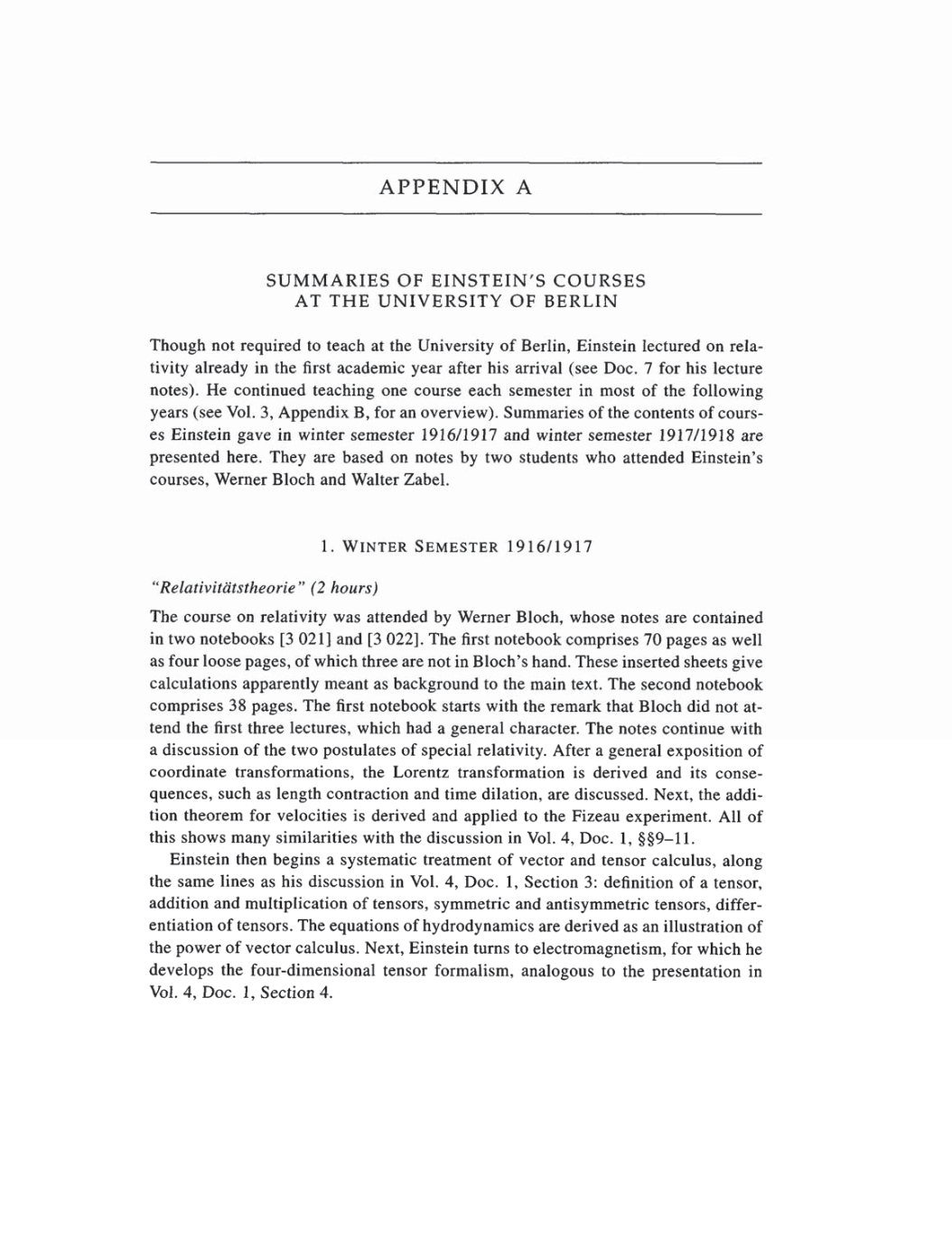APPENDIX
A
SUMMARIES OF EINSTEIN'S COURSES
AT THE UNIVERSITY OF BERLIN
Though not required
to teach
at
the
University
of
Berlin,
Einstein lectured
on
rela-
tivity already
in
the first academic
year
after his arrival
(see
Doc.
7
for
his
lecture
notes).
He
continued
teaching one
course
each
semester
in
most
of the
following
years (see
Vol.
3, Appendix B,
for
an
overview).
Summaries of
the contents
of
cours-
es
Einstein
gave
in
winter
semester
1916/1917 and winter
semester
1917/1918
are
presented
here.
They
are
based
on
notes
by
two
students who attended Einstein’s
courses,
Werner Bloch and Walter Zabel.
1.
Winter Semester 1916/1917
“Relativitätstheorie”
(2
hours)
The
course on
relativity
was
attended
by
Werner
Bloch,
whose
notes
are
contained
in
two
notebooks
[3
021]
and
[3
022].
The first notebook
comprises
70
pages
as
well
as
four loose
pages,
of
which three
are
not in
Bloch’s hand. These inserted sheets
give
calculations
apparently
meant
as
background
to
the
main
text.
The second notebook
comprises
38
pages.
The first notebook
starts
with
the remark that Bloch did
not at-
tend the first three
lectures,
which had
a
general
character. The
notes
continue with
a
discussion of
the two
postulates
of
special relativity.
After
a
general exposition
of
coordinate
transformations,
the
Lorentz transformation
is
derived and its
conse-
quences,
such
as
length
contraction and time
dilation,
are
discussed.
Next,
the addi-
tion theorem for velocities
is
derived and
applied
to
the Fizeau
experiment.
All of
this shows
many
similarities with the discussion
in Vol.
4,
Doc.
1,
§§9-11.
Einstein
then
begins a systematic
treatment
of
vector
and
tensor calculus,
along
the
same
lines
as
his
discussion in
Vol.
4,
Doc.
1,
Section
3:
definition of
a
tensor,
addition and
multiplication
of
tensors,
symmetric
and
antisymmetric
tensors,
differ-
entiation of
tensors.
The
equations
of
hydrodynamics
are
derived
as an
illustration of
the
power
of
vector
calculus.
Next,
Einstein
turns to
electromagnetism,
for which
he
develops
the
four-dimensional
tensor formalism,
analogous
to
the
presentation
in
Vol.
4,
Doc.
1,
Section
4.
